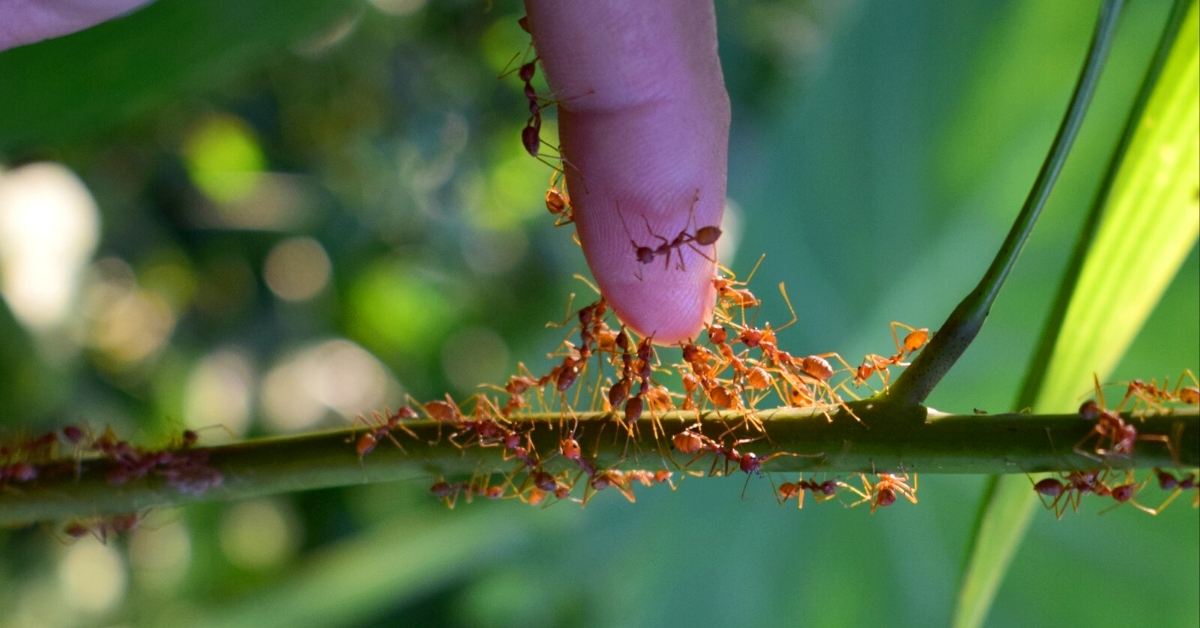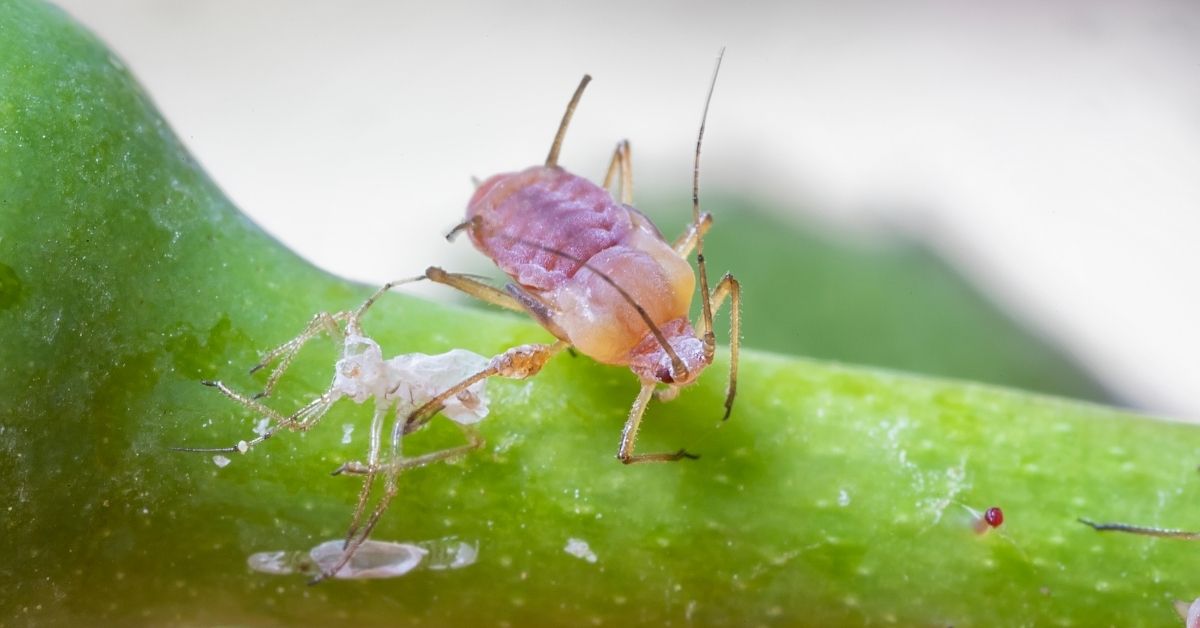Did you know that carpenter ants are the largest type of ant in North America and they can cause significant damage to homes and other structures?
Carpenter ant infestation is a serious problem that can damage your home and cause discomfort. These ants are the largest type of ant in North America, and they dig into wood to build their colonies. They can be found all over the country, but they are more common in the north. There are more than 1,000 varieties of carpenter ants, and they have different colors and sizes.
These ants rarely bite humans, and their bites are not hazardous. However, if they feel threatened or disturbed, they can defend themselves by biting and spraying formic acid into the wound. This can cause a burning sensation and some swelling, but it usually goes away in a few minutes. Some people may have allergic reactions to carpenter ant bites, which can result in more serious symptoms such as difficulty breathing, rapid heartbeat, or nausea. If you experience any of these signs, you should seek medical attention immediately.
In this article, you will learn everything you need to know about carpenter ants and how to control them. You will find out how to identify them, what they eat, where they nest, and what signs of infestation to look for. You will also discover the best methods to prevent and treat carpenter ant problems using natural and chemical solutions. By following these tips, you can protect your home and your health from these destructive pests.
What Do Carpenter Ants Look Like?
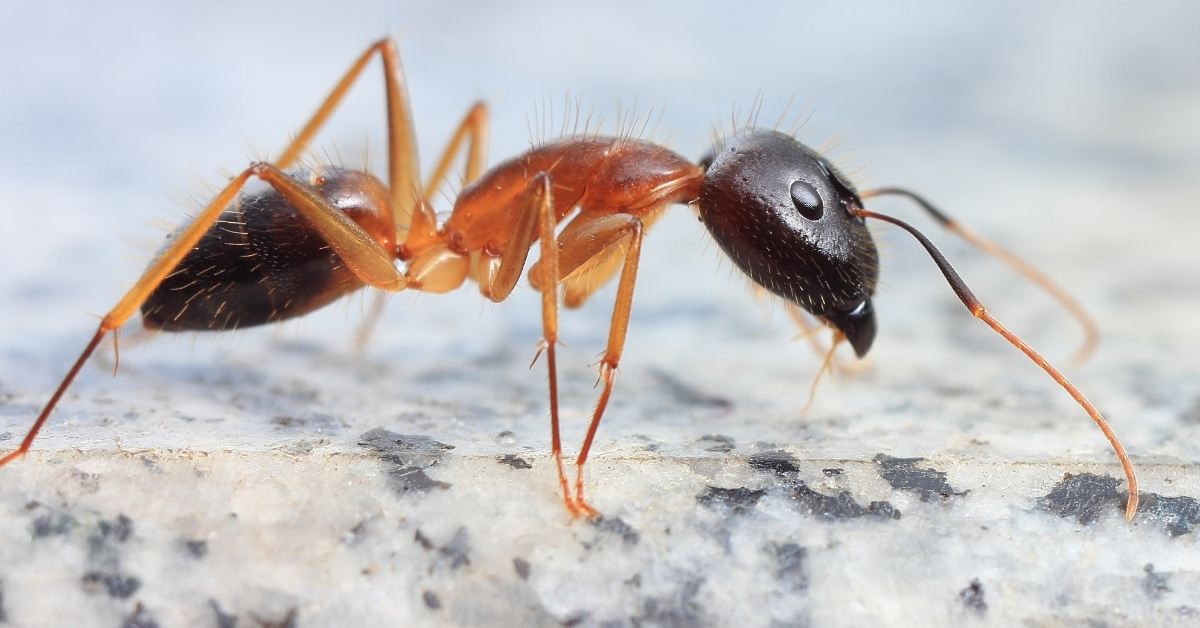
Carpenter ants (Camponotus spp.) must be present to conduct a practical plan for their extermination. Why? Various treatment approaches are required for various ant species.
Carpenter ants belong to the genus Camponotus, and they have six legs, curved antennae, and sometimes wings. They can be black, red, or a combination of both colors. They are usually about half an inch long, but some can grow up to one inch. Carpenter ants do not eat wood, but they chew through it to create tunnels and chambers for their nests. They prefer moist and decayed wood, but they can also infest sound wood.
Carpenter ants are typically only around a half-inch long. However, they tend to be bigger than other kinds of ants, mainly fire ants. One-inch-long carpenter ants are not a sight to behold when you discover them in your house.
It is possible to find carpenter ants with red or black bodies, redheads, and chests.
However, Texas carpenter ants are more commonly black with redheads and chests than the other way around. These insects have six legs, a crooked antenna, and can have wings. Carpenter ants are nocturnal, so you may encounter them more frequently while you’re getting ready to retire to bed.
When identifying carpenter ants, homeowners usually confuse these insects with termites. So, how can you tell the two apart?
Do Carpenter Ants Bite People?
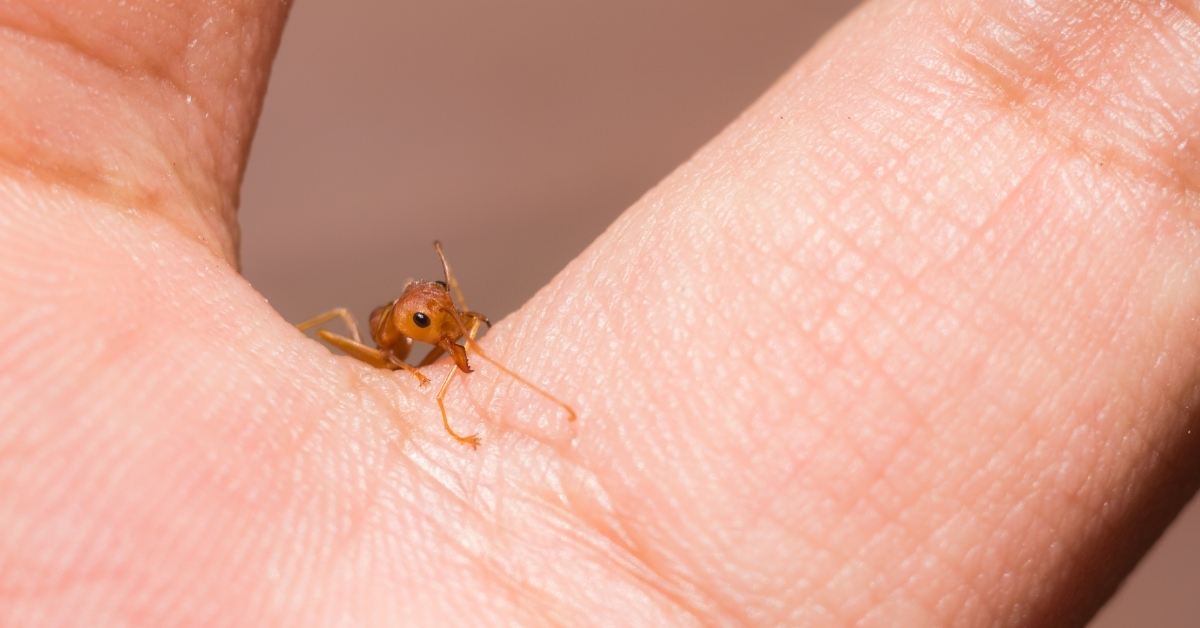
Yes. Carpenter ants defend their colonies by biting anyone who disturbs them. The bite can be unpleasant and perhaps result in skin breakdown due to its massive size. Carpenter ants can also squirt formic acid into bite wounds as a defense mechanism, increasing discomfort. They employ this capacity to battle other insects and ant species when threatened.
Controlling these pests is necessary because of the pain they cause from their bites and the destruction they do to homes and structures as a result of their nesting. Due to their complicated life cycle and nest behaviors, it is advised to call a pest control specialist if you suspect a carpenter ant infestation within your house or area.
What Makes Carpenter Ants Bite?
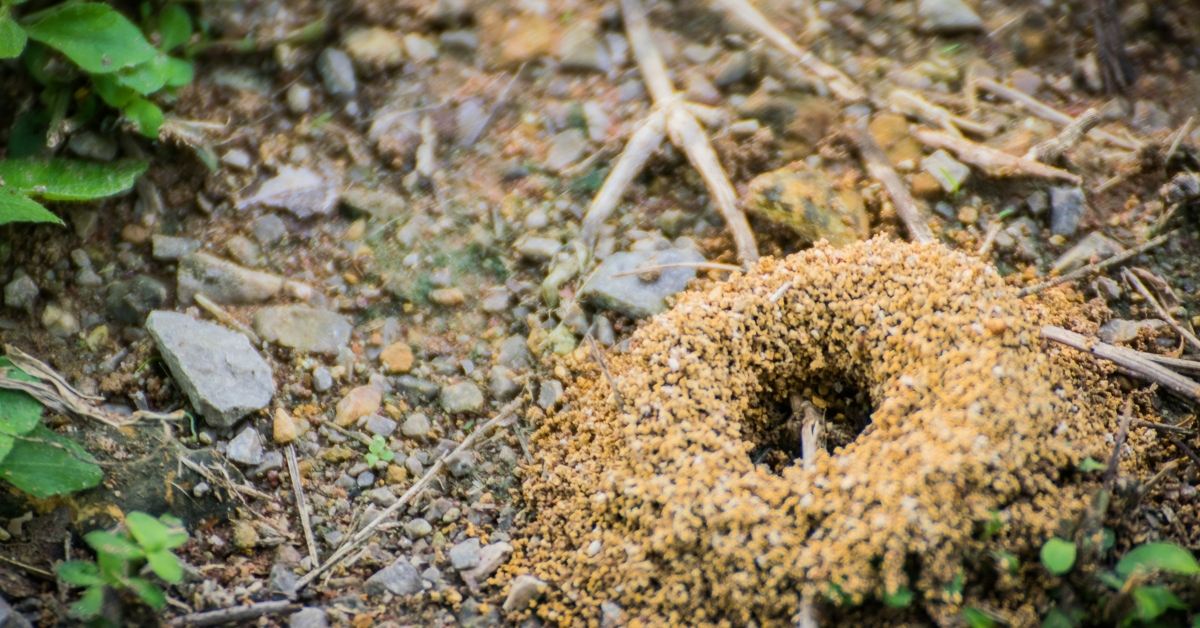
Nests of carpenter ants are often found in New England buildings that have suffered moisture damage. They consume plants, typical sweets, and other insects as food. Unlike ticks or bedbugs, these pests do not bite people to feed on blood. However, a carpenter ant could bite to defend itself if touched or hurt.
Are Carpenter Ant Bites Painful?
Carpenter ants bite and emit formic acid in addition to the first pinch. This substance causes burning that feels like a bee sting. An allergic response to an ant bite might result in severe inflammation that may need medical attention immediately.
Are Carpenter Ant Bites Dangerous?
It is essential for you to understand a little bit about how a Carpenter Ant bite feels if you have never experienced one. Understanding what to anticipate from a carpenter’s ant bite will make it easier for you to appreciate why it is advised to exercise caution around these ants.
The bites of carpenter ants are generally not hazardous. Although they are primarily unharmful, they may ruin your home’s wood. Like termites, these insects do not consume wood but burrow through it to create their galleries and colonies.
Carpenter Ant Bites & Infection
Carpenter ant bites should not be scratched and should instead be cleaned with soap and water to prevent infection. Medical attention could be necessary for several infected ant bites.
Carpenter Ant Bite Effects
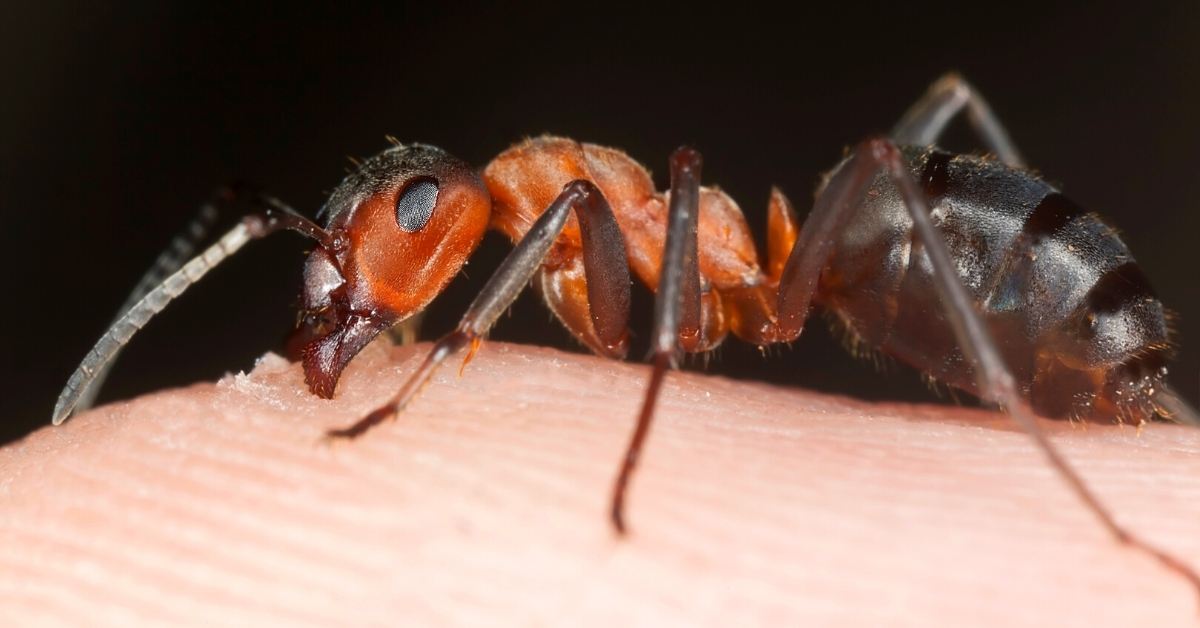
If you touch or disturb a colony of carpenter ants, they could bite. Common indications of a bite include:
- Skin irritation is normal after a bite and often lasts until the puncture site has healed. This includes itching and burning. If the insect sprays formic acid into the wound, you could feel a burning sensation.
- Swelling – Carpenter ant bites may sometimes swell and become inflamed, leaving your skin feeling painful and warm.
- Allergies – Although uncommon, severe allergic responses might result in difficulty breathing, an accelerated heartbeat, or flu-like symptoms. If you have any of these problems after a carpenter ant bite, see a doctor.
Can You Be Allergic to Ant Bites?
Some individuals believe that you cannot be allergic to the bites of carpenter ants. Although it’s rare, an allergic response to the majority of ant bites is incorrect. In contrast, allergies to bee stings are significantly more prevalent.
Carpenter ant bite allergy symptoms might include:
- Swelling of the face, throat, or tongue
- Dizziness, fainting, or losing consciousness.
- Vomiting, nausea, and/or diarrhea
- Rapid and/or weak pulse rate
- Breathing difficulties
- Pale or flushed skin
- Hives
What do carpenter ants eat?
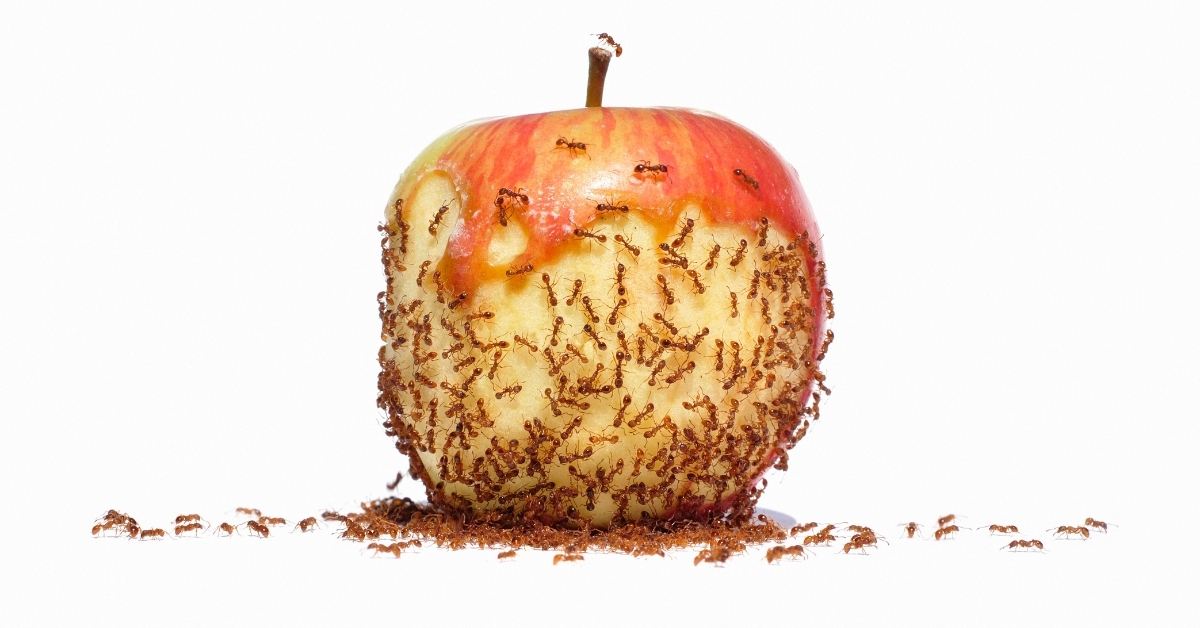
Carpenter ants are predators that eat both living and dead insects. In addition, a variety of plant fluids and nectars, honeydew, syrup, jelly, sugar, salt, fruits, meat, and fat are all part of their diet. You do not want to invite these people to your barbeque!
The term “carpenter ant,” rather than referring to the pest’s food, describes the insect’s capacity for excavation. Carpenter ants only nibble on the wood and discard the shavings, which accumulate like sawdust under the nest’s entrance hole as they construct tunnels from wooden buildings.
Carpenter ants consume tiny insects and other invertebrates, plant fluids, and the enticing honeydew excreted by aphids in their native habitat outdoors. Carpenter ants must routinely leave the nest to go foraging since they are in charge of providing food for the whole colony.
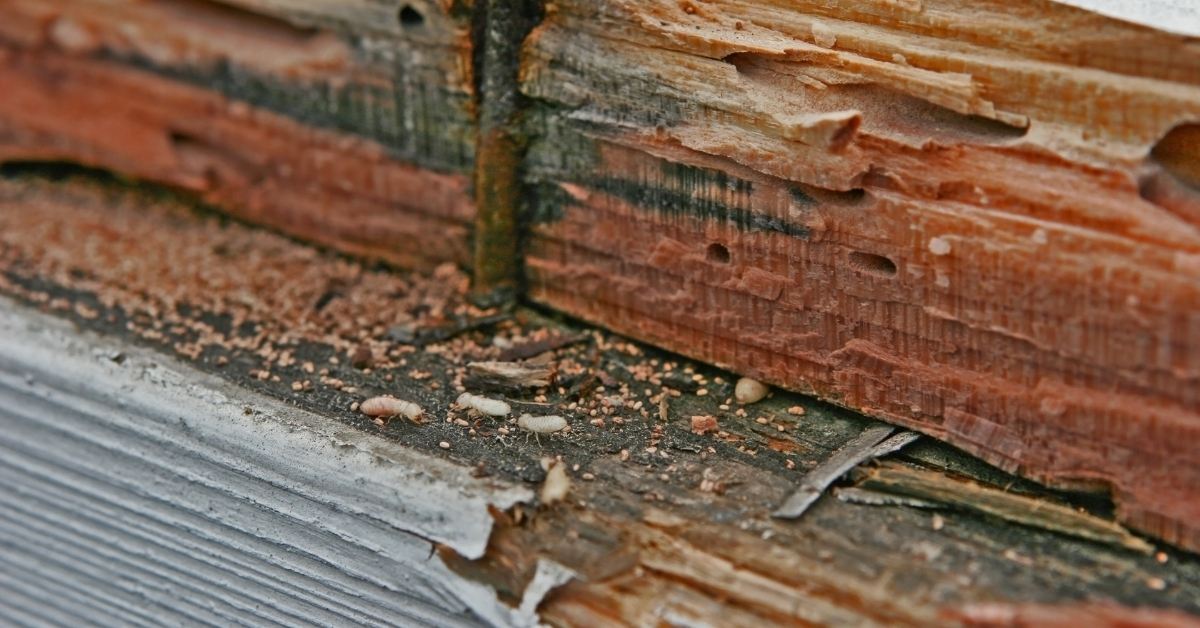
Carpenter ants have been known to forage up to 100 yards from their colony while looking for food. They use pheromones to indicate their foraging routes. Carpenter ants often come into touch with Canadian people’s houses due to the large distances they traverse while foraging.
Carpenter ants gain access to homes and other structures via tree branches that touch the roof or through cracks and other openings in the foundation. Foraging ants look for and take from a range of food sources once they are inside.
Carpenter ants assault kitchens in search of meats, sugar, and syrupy components like honey and jellies because they ingest both carbs and proteins. In many houses throughout Canada, pet food and grease spills are attractive to carpenter ants.
Termites Vs. Carpenter Ants
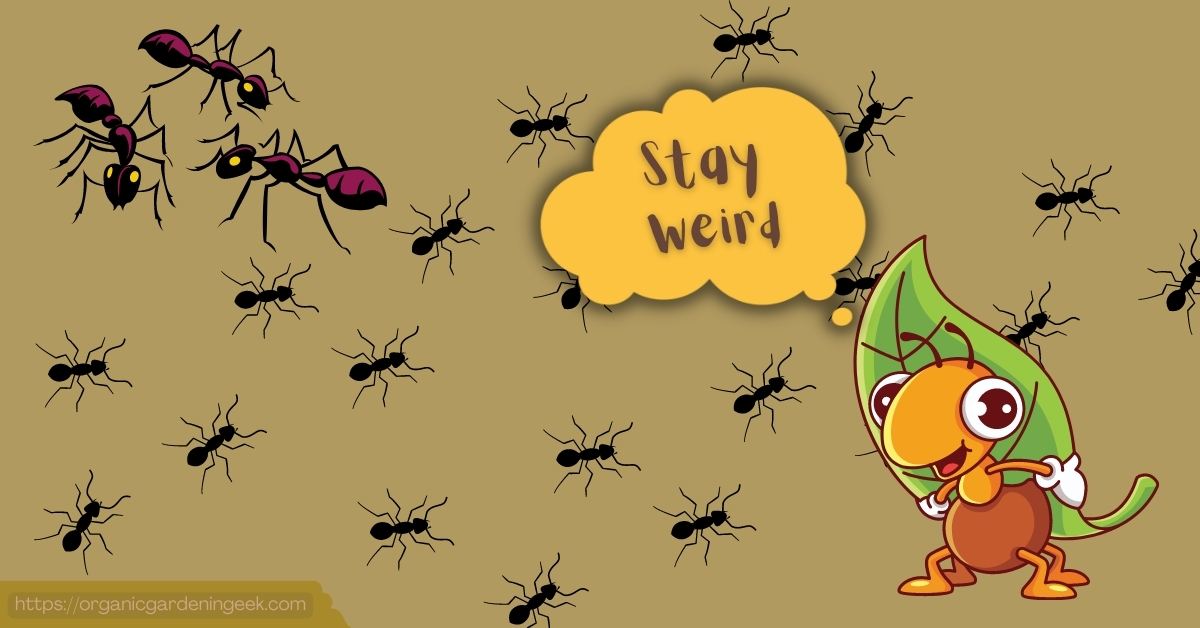
Due to their similar coloring, the development of wings in both species and their reputation for damaging the wood, homeowners commonly confuse these two kinds of insects.
A pest control expert would advise you to use numerous methods to get rid of swarming termites and carpenter ants.
The size and form of the body are the primary physical distinction between termites and carpenter ants. Carpenter ants have a characteristic hourglass-shaped thorax and abdomen.
The ant would seem to be somewhat bigger if you held a penny up next to it. The thorax and abdomen of a termite, in comparison, tend to meld together and are slightly smaller in size.
Since termites and ants both swarm in the spring, these two insects may seem to be the most similar to the untrained eye. To be on the safe side, you should hire a pest control specialist to identify the bug you observe so you can be more prepared for the following steps.
Even if you’ve confirmed that you don’t have a termite infestation, you should still be cautious since carpenter ants may harm your house.
Your home may be less appealing to these pests by doing the following:
- Where dirt or mulch is in contact with your wood siding, minimize or eliminate this contact.
- Repair any leaks in your plumbing, roof, or other spots where moisture can gather and provide ants with a supply of water.
- Fix any foundational cracks or gaps. Pay close attention to the points where pipes and wires enter your property.
- Trim tree limbs and other vegetation to prevent them from touching your roof and create a route for ants to enter your home.
- Any firewood should be stacked far from the foundation of your house and elevated off the ground. Because your garage or house is a great nesting place for carpenter ants, stay away from keeping this wood there.
Are there any additional signs you should watch out for to safeguard your property since carpenter ants are nocturnal, making it less likely that the ordinary homeowner would detect them?
Signs Of Carpenter Ants In Houses
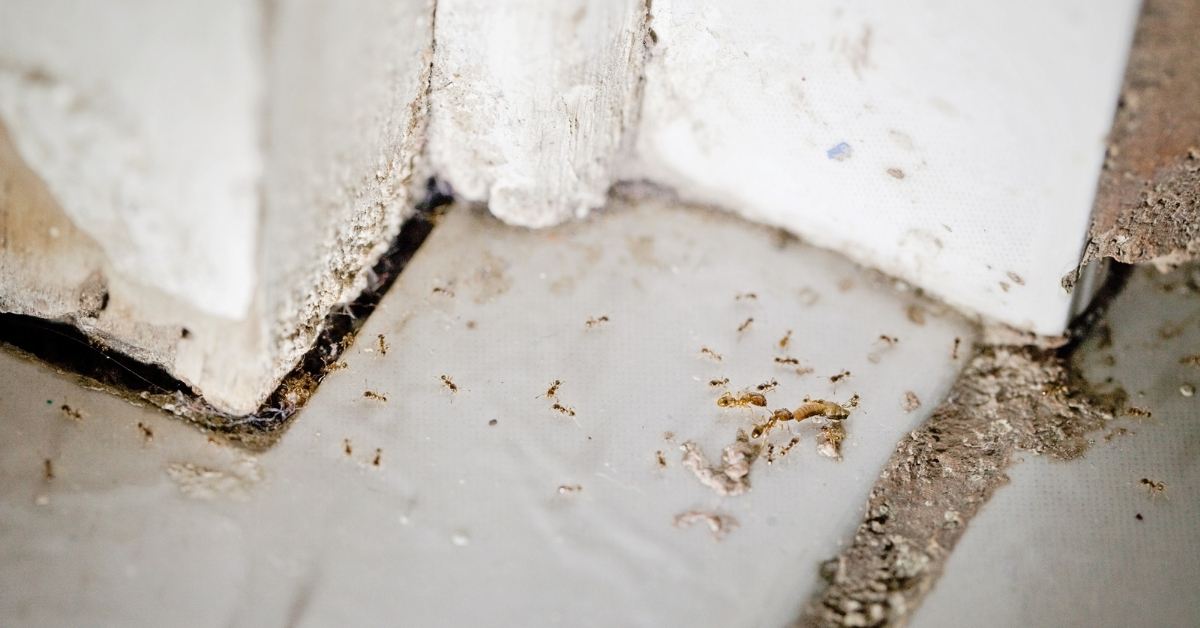
Carpenter ants will chew into the wood as they start to build a nest and leave behind little mounds of sawdust.
Carpenter ants are most likely setting up shop if you see little pieces of wood beginning to develop around decaying trees or the foundation of your house.
If you see a single carpenter ant and decide you don’t need to worry, you might be very mistaken. That’s because carpenter ants send out worker ants to assess the area before they build their nests.
Even while these scouts may be acting independently, they nonetheless provide a warning that thousands of additional insects could be present in other areas of your land.
Even more concerning evidence of an infestation is discovering flying ants. These pests could attest to the already-built nests and might be preparing to extend their colony further.
Sadly, a carpenter’s ant infestation might deteriorate further. In extreme circumstances, these ants will consume enough wood to deteriorate or deform your home’s framework.
Doors and windows that seem stuck or ceilings and walls that don’t seem to be supported atop one another are indicators of twisted framework and broken wood. You should really contact the experts at this stage.
You may be asking why these insects are biting humans in the first place because their natural tendency is to gnaw through wood.
How To Understand If You Have A Carpenter Ant Infestation
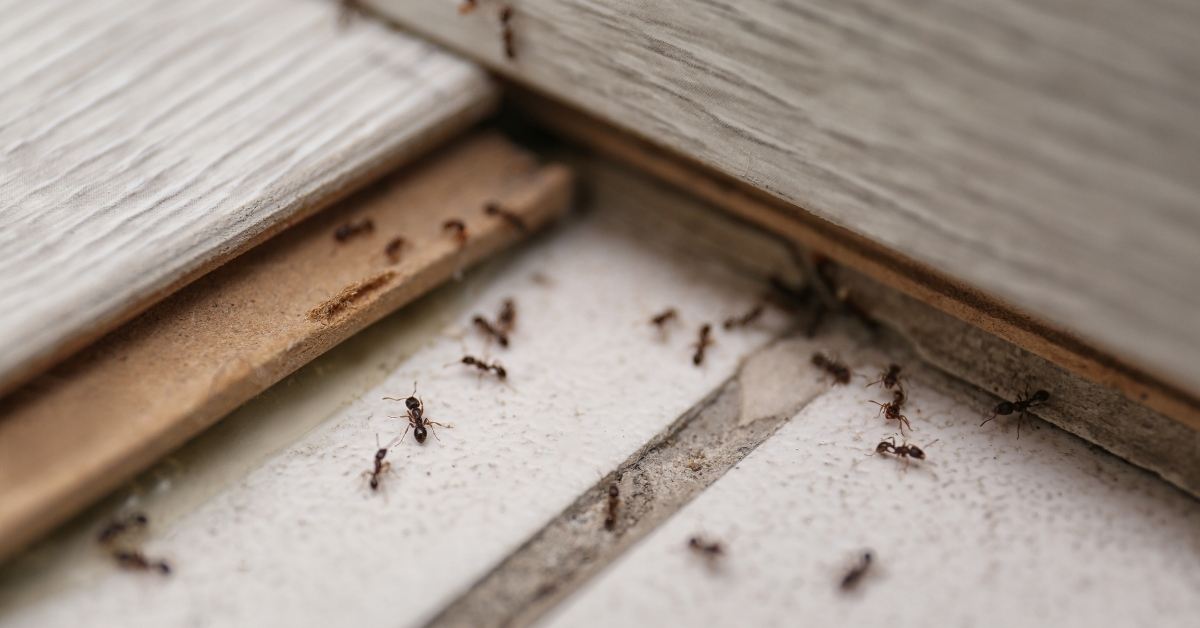
Any wood in which they nest is susceptible to damage by carpenter ants. In rare instances, a colony of carpenter ants may create satellite nests. If the infestation is not managed, it can become quite serious.
Getting in touch with a pest control expert is crucial to effectively treat an infestation and lower the likelihood that the colony will return.
Dry wood is seldom the home of carpenter ants. Points of entry, such as attic vents, foundations, fissures, electric cables, pipes, and telephone lines, may be used to locate indoor infestations.
Carpenter ants build their nests in structural timber, including spaces between walls, hollow doors and windows, and foam panels. Carpenter ants often look for softened wood caused by moisture, rot, or other insects.
Infestation Signs
The presence of workers within a structure or residence is the most visible indication of a carpenter’s ant infestation. However, the presence of ants does not prove that a carpenter’s ant colony has made a home within a building.
Carpenter ants travel considerable distances from their colonies in search of food.
Wood shaving heaps are often seen underneath wooden objects when a carpenter’s ant infestation is extensive.
Carpenter ants tunnel into wood to build their nests, and you may tell if you hear mild rustling sounds coming from within woodwork or walls.
Additionally, an infestation is virtually definite when large winged ants emerge from walls, ceilings, and other concealed cracks.
How To Get Rid Of Carpenter Ants
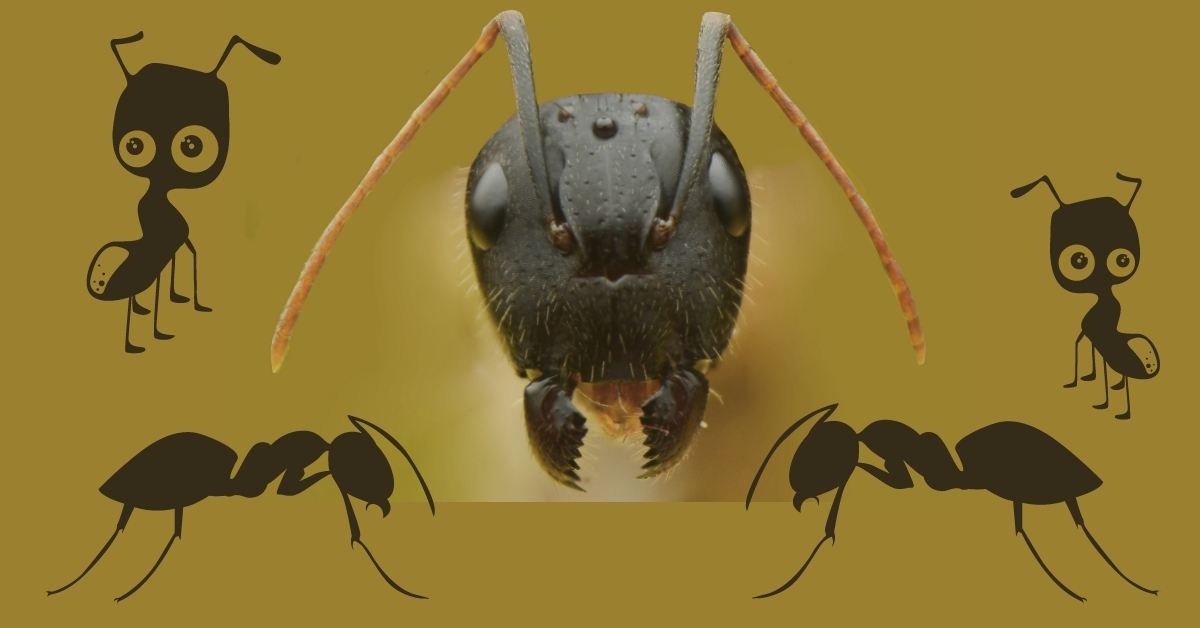
Check any decomposing wood where the insects may nest if you think you have a carpenter ant issue. These bugs are often found in door or window frames, porch supports, and roofs. Although it’s better to contact professionals to prevent painful carpenter ant bites, removing contaminated wood may lower ant populations.
Does baking soda kill ants?
Well, to be very honest, there is no one easy way to get rid of carpenter ants. The most straightforward approach to getting rid of as many ants as possible at once is to identify the nest.
Therefore, the first step in handling a carpenter ant issue is searching inside, outdoors, and within your walls for evidence of a nest.
You may try applying an insecticide spray on your own if you discover the nest. Because carpenter ants will attack if they feel their house is in danger, this may be pretty harmful and leave you covered in bites.
If you can’t locate the nest, your best option is to utilize a bait to persuade ants to return to the colony with specific treatments.
Because this bait only kills a tiny number of ants at a time, it will take some time before your numbers start to decline.
Until a nest is located and dealt with, your carpenter ant issue will regrettably persist.
Nevertheless, there are a few things you may do to reclaim your house.
- Eliminate any nearby water sources. Leaks should be stopped, and damaged parts should be repaired with wet wood.
- Keep timber and other stacks of wood away from your house.
- To prevent ants from using them to enter your home, ensure no plants or trees are touching your property.
- When your windows are shut, caulk any cracks.
- To get rid of ants, consider using an ant spray or a homemade concoction of boric acid, water, and sugar. Use these medications as advised and keep them away from children and pets.
If none of these techniques work, think about hiring a specialist to eliminate the carpenter ant colony in your house.
It may be time to call in an expert if you’re searching for a treatment plan with assured outcomes and no effort on your part.
Is There Any Natural Carpenter Ant Pesticide?

Contrary to termites or beetles, carpenter ants do not really consume the wood they destroy while they are nesting or living within wooden constructions.
Although there are many different kinds of carpenter ants, red and black carpenter ants are among the most frequent pests in houses and structures.
Although carpenter ant nests are hard to find, their existence may be detected by keeping an eye out for flying ants within the house and sawdust surrounding wooden structures.
Check walls, pipes, and electrical wires for the nest of carpenter ants when they invade extensive interior areas. Carpenter ant activity may sometimes be heard rustling within a wall void.
But you don’t always need to knock down a building to get rid of a colony of carpenter ants unless the ants have already done significant damage to it.
Control Methods
Natural insecticides for carpenter ants are often baits. These insecticides have the appearance of sweet bait. The bait is positioned along pathways leading to and from the nest, and worker ants bring it back to the nest to provide to the queen, larvae, and other workers.
These treatments can cause a colony to perish within a few days. The efficacy of the chemical may take longer, however, if satellite nests have been built in different areas since workers will need to return the bait to the whole colony.
Challenges of Controlling Process
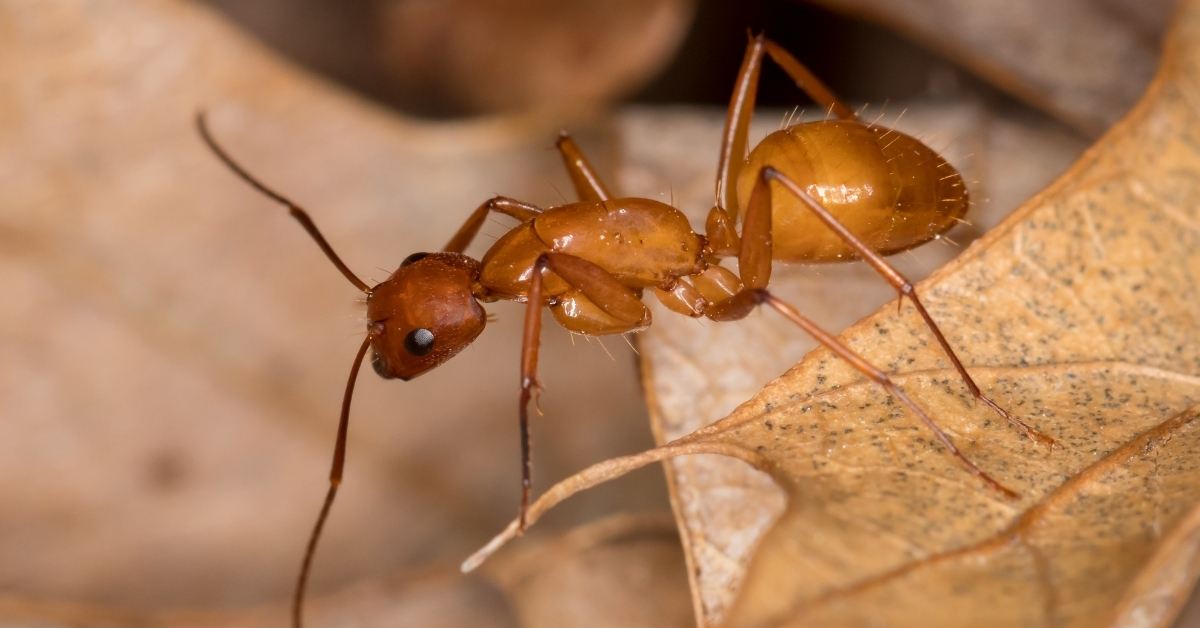
Boric acid is one of the most widely accessible products for eradicating carpenter ants and other ant species among the various carpenter ant insecticides sold in shops.
Although carpenter ants may be killed by boric acid, the bait combination must be used according to the packaging instructions.
Natural insecticides cannot completely eliminate a colony unless they are used correctly.
Additionally, it is essential to get in touch with a reputable pest control provider due to the satellite nests and possible structural damage.
Carpenter ant workers, eggs, larvae, and the queen may all be eliminated by hiring pest management specialists using a combination of chemical and nonchemical methods.
Can You Use Boric Acid To Get Rid Of Carpenter Ants?

Certain commercially available carpenter ant management methods use the powdered pesticide boric acid, an odorless, nonstaining substance that kills ants and other pests. The active component of boric acid has herbicidal, fungicidal, and insecticidal properties.
To control carpenter ants, boric acid may be applied as a dry powder or a liquid insect bait solution that also contains a food attractant. Boric acid poisons the stomachs of insects like carpenter ants. The dry powder’s main function is to adhere to an insect’s exoskeleton.
The powder is consumed by the insect as it combs its legs to eliminate it. A dusty coating is produced when powdered boric acid is injected into cracks and crevices.
Carpenter ants that are exposed to boric acid-containing dust develop borax adhesion on their legs. They ingest the poison when grooming, which might be lethal.
Conclusion
In conclusion, carpenter ants are a common and harmful pest that can damage your home and cause pain and allergies. They are large ants that dig into wood to create their nests, and they can be found in various colors and sizes. To control them, you need to identify them, locate their nests, and use effective methods to eliminate them. You can use natural or chemical solutions, depending on your preference and situation. You can also prevent carpenter ant infestation by keeping your wood dry and sealed, removing any food sources, and trimming any vegetation that touches your house. By following these steps, you can enjoy a carpenter’s ant-free home and a healthy environment.
